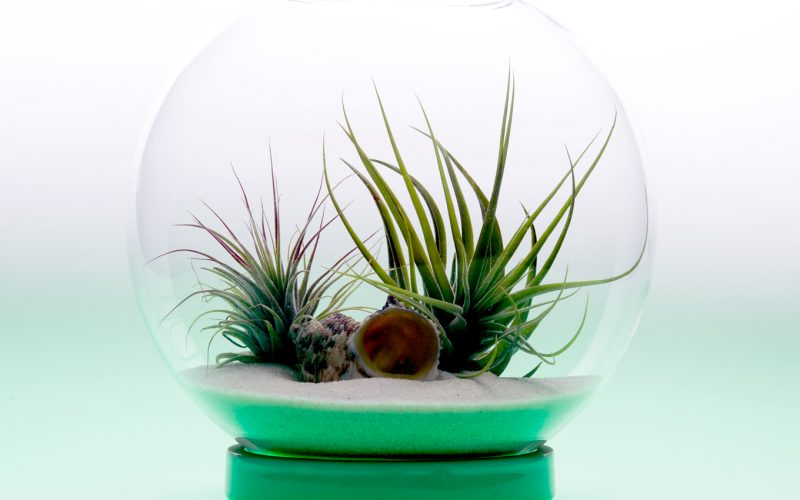
Courtesy Photo
A terrarium is like an aquarium for plants, usually within a glass or transparent container. Each contains its own mini ecosystem, loosely “sealed” with a cork or cover unless opened for maintenance.
It may not be a genie, but a bottle full of plants is sure to grant your wish for a more beautiful home or office without too much effort. Urban gardening has dozens of opportunities for the plant lover who lacks the space for a larger-scale garden.
A terrarium is like an aquarium for plants, usually within a glass or transparent container. Each contains its own mini ecosystem, loosely “sealed” with a cork or cover unless opened for maintenance. Some terrariums are open to the air. Open terrariums are perfect for succulents, which require little water. Closed terrariums are better for tropical or moisture-loving plants like orchids.
The first terrarium concept grew from a serendipitous accident when Nathaniel Bagshaw Ward, an English botanist, forgot about one of his insect jars and noticed a seedling had germinated inside. He popularized the Wardian Case, which inspired the glass aquarium as well as (perhaps unfortunately) providing a convenient tool for botanists struggling to import foreign plants to Europe without the plants dying from exposure during the long voyage.
To build your own terrarium, choose which kind of transparent container you want. Add a layer of rocks or marbles to the bottom as a “false” drain. Next, add a very thin layer of charcoal to prevent mold growth and keep your terrarium fresh. Add the appropriate kind of potting soil on top (for cactuses and succulents, they have their own special potting soil, while ferns and most other plants use the regular variety). At this point, a third of your container should be full. Now add the plants, giving them enough room and ensuring that decaying parts or bugs have been removed and the plants aren’t touching the container sides. Use mulch around the plants, like moss or seashells and inanimate objects for decoration. Don’t put the terrarium in direct sunlight or it will barbecue the plants! Also be very sparing with how much you water it. Visit SproutHome.com for how-to videos and more terrarium tips.
Or you can buy a kit from a place like the Brooklyn Botanic Garden, which sells four different terrarium kits as a fundraiser for their work! Visit ShopBBG.org for their selection of items available for purchase. Terrarium kits range in price from twenty dollars for a hanging globe to seventy dollars for a “Romantik” glass jar that includes figurines for either heterosexual or same-sex couples.
How far can you go with your terrarium? David Latimer of England claims that his 50-year-old bottled plant (Tradescantia, or spiderwort) has been thriving since 1960 when he added some compost, a quarter pint of water, and a seedling to a ten gallon glass bottle. According to The Times (UK), Latimer states that it has remained closed and unmaintained in its self-sufficient ecosystem since 1972, using photosynthesis and recycling nutrients. This is extraordinary, since most closed terrariums require maintenance to prevent mold from building up. But who knows, perhaps your own terrarium will survive long enough for your grandchildren to enjoy!
Ripples is an emerging online educational center inspired by a holistic approach to making a difference. Follow our journey to live sustainably and make ripples with our lifestyle at: www.RipplesBlog.org.










